-
 By Derek Duckworth
By Derek Duckworth
- October 16, 2025
- 0 Comments
- Blog
From LOLs to Insights: How Scientists Study the Way We Talk Online and What It Reveals About You.
Every time you type a message, you leave tiny clues about who you are and researchers are starting to piece them together. From emojis (those little pictures that show mood) to how long you take to reply, simple chat habits can hint at personality and intent. In one study of speed-dating conversations, people who asked more follow-up questions one extra curious question were seen as friendlier and more attractive. Welcome to the emerging science of online conversations: the playful, practical study of how we talk online.
Ever wonder what your messages say about you? From your emoji style to how fast you reply, scientists are now studying everyday chats to decode personality and connection. This article explores how online talk became data and what that means for dating, customer service, and chatrooms like ours.
Try our random chat and see how you talk compared to others
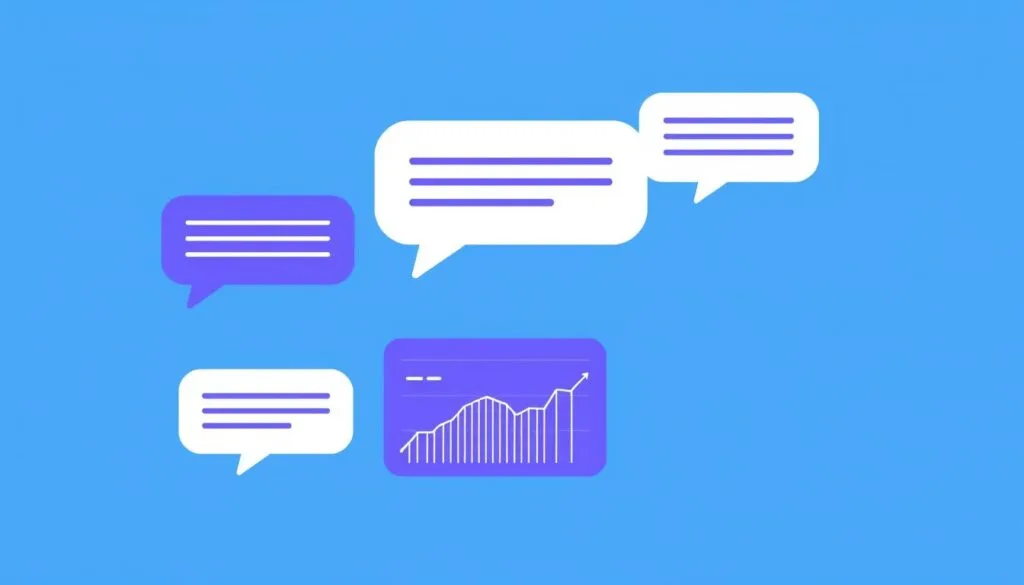
The Backstory: From Berlin to Big Data
In the early days of online chat, teams of scientists (some working in places like Berlin) tried to study how teens and others talked online and quickly hit roadblocks. Recording real conversations was a nightmare: privacy rules, clunky software, and messy logs (that’s just a tech word for saved records of chats) made collecting usable data slow and awkward. Imagine transcribing hours of chat by hand a real paper-and-pen slog.
Fast forward to today: almost every chat, call, or meeting happens on a device that can save text. What once took months of manual work can now be processed in minutes. That means researchers can run a study on thousands or even millions of conversations across platforms from dating apps to customer service systems and spot patterns that were invisible before.
That shift gave rise to a new kind of study: the science of online conversations. It blends linguistics, psychology, computer science, and sociology so scientists can treat ordinary conversation as data not just chat, but a window into how people think, feel, and connect.
Read our guide to the history of chat rooms and see how early chat studies shaped modern platforms.
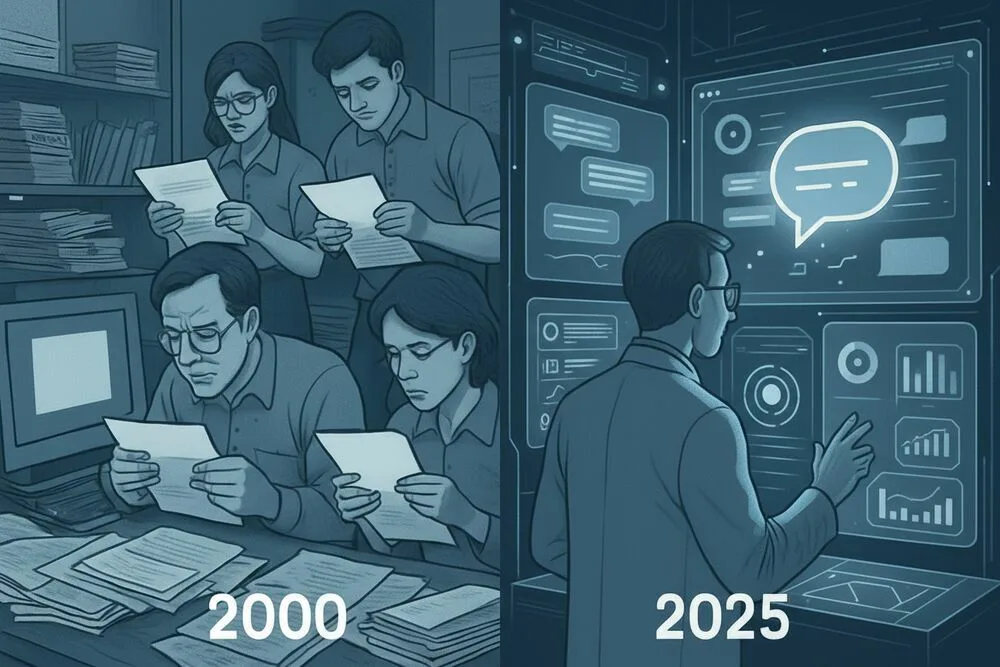
How Scientists Study Conversations
The process of studying online conversation follows a step-by-step workflow that turns everyday messages into usable information for research and product design:
Collect
Researchers gather chats, messages, or voice calls (always with consent). That can mean anything from dating-app DMs to Slack threads at work. Platforms are simply the places people meet online each one gives different kinds of interactions to study.
Transcribe
Transcribe means turning speech into text. Voice calls get converted by smart voice-to-text tools (the same idea as your phone’s speech recognition), and researchers often spot-check results by hand to reduce errors.
Organize
Conversations are split into “turns” who spoke when and tagged with details like reply time, emojis used, or pauses. Think of a turn as a single line in a script: it tells who said what and when.
Analyze
Here researchers count and compare patterns: How many questions does a person ask? How fast do people reply? Which words show up most? These patterns give clues about engagement, friendliness, or disagreement.
Interpret
Interpretation is where meaning happens. Scientists link patterns to real-world behaviour: frequent follow-up questions might signal curiosity, slow replies may suggest low interest, and certain emoji mixes can hint at tone.
Apply
Finally, findings get used to improve matchmaking on dating apps, help moderators design friendlier forums, or train customer service teams to sound more helpful. In short: research becomes practical change.
Quick example: imagine this tiny chat snippet and what researchers note.
A: Hey! You free this weekend? B: Maybe. What are you thinking? (reply time: 45s) A: Coffee or hike?(uses emoji; follow-up question) B: Coffee sounds good.

Researchers would mark A’s messages as two turns, note that A asked a follow-up question (shows curiosity), record B’s 45-second reply (reply speed), and tag the emojis as emotional cues. That structured data lets scientists compare patterns across thousands of similar interactions.
The conversation analysis workflow: Chat → Transcript → Data → Insight
Two important notes: researchers respect privacy and usually follow ethical review processes (like Institutional Review Boards) before collecting personal conversations. And while the workflow sounds neat, it often involves messy clean-up behind the scenes like fixing typos, anonymizing names, and deciding which bits of data are meaningful.
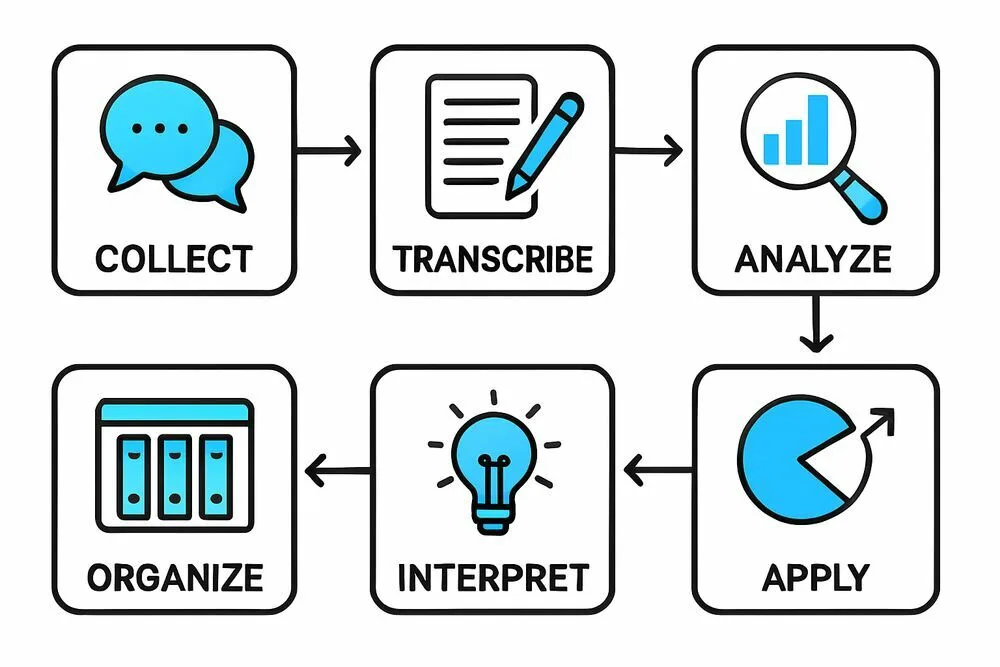
Now that you’ve seen how scientists study conversations, let’s see what your own chat style says about you…
🗣️ What's Your Conversation Style?
Answer honestly, keep your own score, then check what your total means below!
-
When someone messages you...
A. You reply straight away, short and clear. (1 point)
B. You like adding context or stories. (2 points)
C. You reply with emojis or gifs. (3 points)
D. You take your time to think first. (4 points) -
When chats go quiet, you...
A. Start a new topic. (1 point)
B. Wait to see what others say. (2 points)
C. Drop a meme or joke. (3 points)
D. Log off and come back later. (4 points) -
How do you feel about long messages?
A. Love them — it’s real conversation! (1 point)
B. Depends who it is. (2 points)
C. Prefer short replies. (3 points)
D. I’d rather voice note. (4 points) -
How often do you use emojis?
A. Rarely — only for tone. (1 point)
B. Often, they’re part of my sentences. (2 points)
C. All the time 😂🔥😍. (3 points)
D. Never, I keep things simple. (4 points) -
How quickly do you reply to messages?
A. Instantly. (1 point)
B. Within an hour. (2 points)
C. Later when I feel like it. (3 points)
D. Depends who it is. (4 points)
🧮 Now total your score...
5–8 points: The Reactor — quick, expressive, always keeping the chat alive.
9–12 points: The Connector — balanced, curious, you adapt easily to others’ energy.
13–16 points: The Observer — thoughtful, patient, you choose your words carefully.
17–20 points: The Lone Texter — independent, reserved, you like control over your pace.
What They’re Finding (The Fun Bit)
The science of online conversations is full of neat, sometimes surprising results about how people connect digitally. Below are a few bite-sized findings each one is from a study or experiment that helps us understand everyday chats a little better.
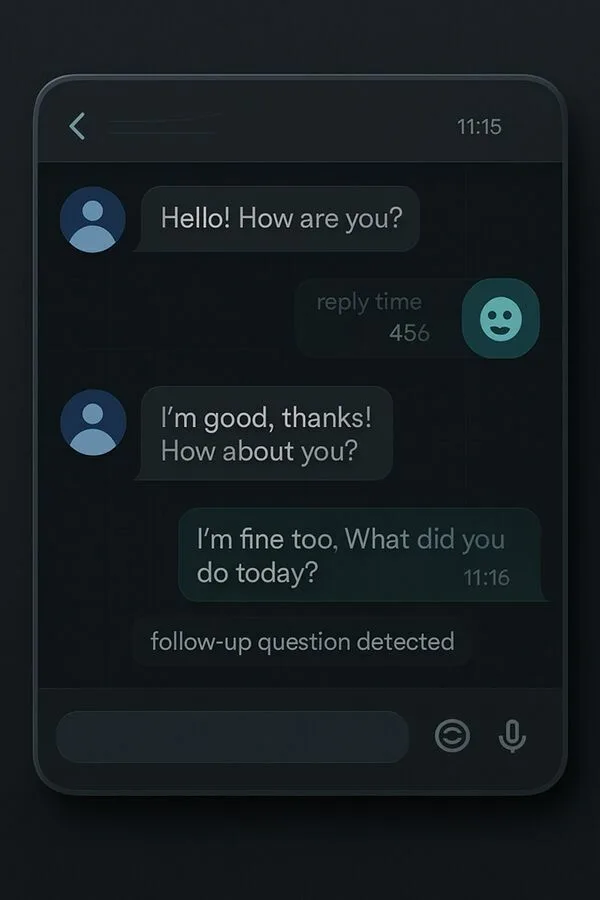
Dating Conversations Curiosity Wins
People who ask more follow-up questions tend to get more second dates. In one study of speed-dating interactions, researchers found that asking just one extra follow-up question made people seem friendlier and more attractive roughly improving second-date chances in that experiment. Try it: instead of “What do you do?” follow up with “What do you like most about that?” it signals real interest.
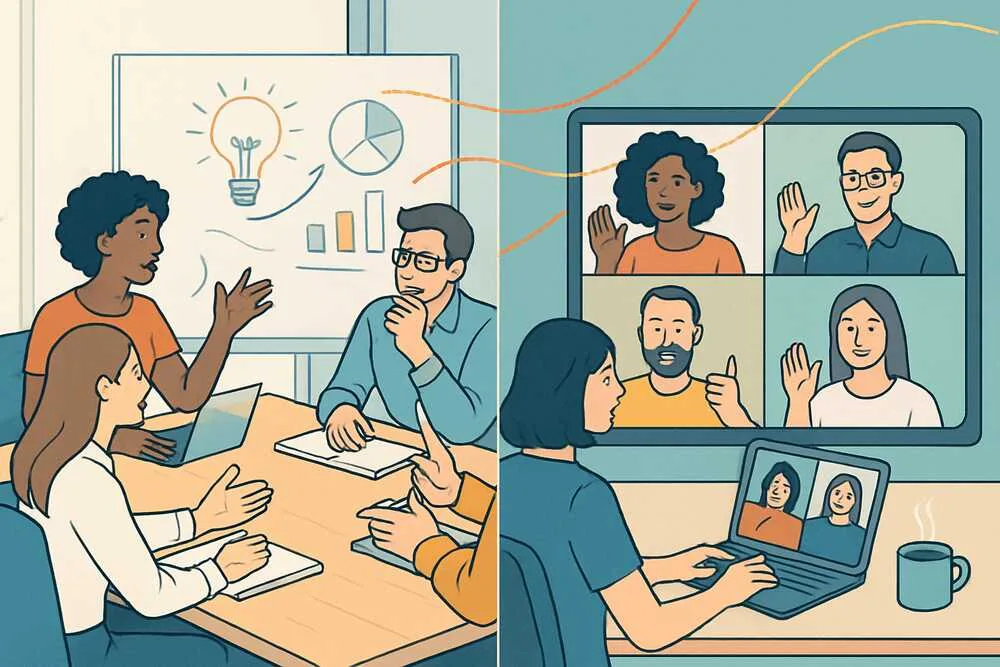
Work Meetings — Rhythm Matters
Virtual meetings can dampen spontaneity. Some research suggests that the tiny delays and changed rhythm of video calls reduce the flow of back-and-forth idea generation one paper reported drops in creative output in online vs. in-person settings. Practical tip: try shorter rounds of speaking or deliberate “bounce” prompts (like “two ideas in 60 seconds”) to recreate the quick flow of in-person discussion.
Customer Service — First and Last Impressions Count
Analyses of thousands of service interactions show that how agents start and finish a call or chat strongly shapes ratings. The first 15 seconds and the wrap-up often matter more than you expect a warm greeting and a clear close boost satisfaction. If you’re a service rep, a simple script tweak (“Thanks can I confirm that solved it for you?”) helps.
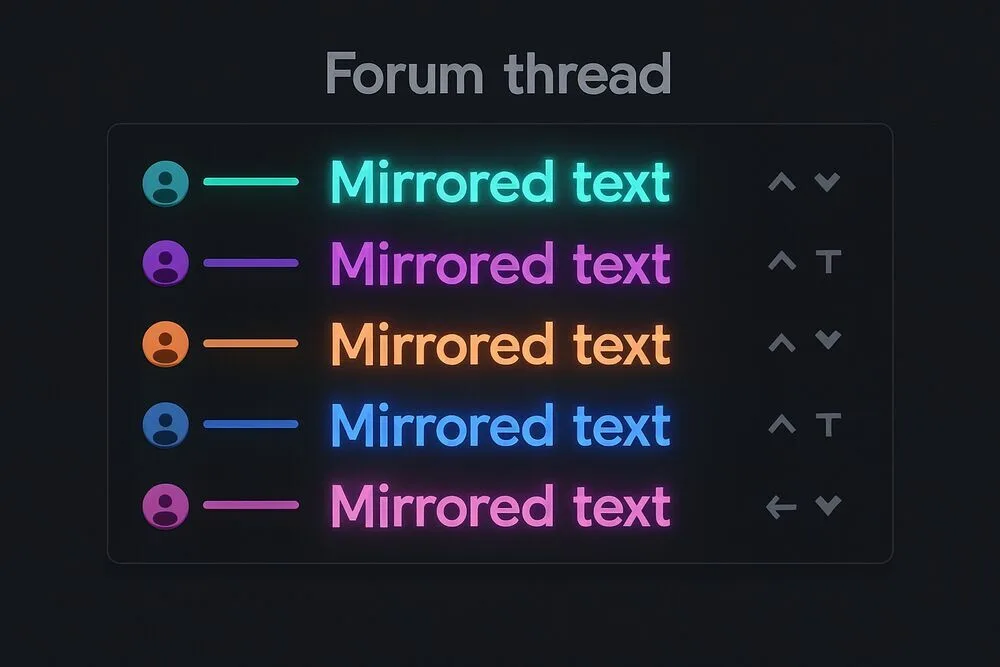
Online Forums — Mirror, but don’t mimic
People are more persuasive when they subtly mirror others’ language matching vocabulary or sentence style helps build rapport. In experiments, adopting someone’s wording increased agreement in discussions. Quick example: if a commenter uses “I’m thinking…” a reply like “You’re thinking that…” echoes their tone and feels familiar.
Police Interactions and Letting People Talk
Analyses of body-cam footage suggest that officers who interrupt less are often rated as more respectful and fair. Letting someone fully explain themselves before responding improves perceptions of the interaction, even if the outcome is the same. That finding has serious real-world implications for training and public trust.
Across these findings, a common theme emerges: simple conversational moves asking a question, mirroring a word, pausing before you reply can shape how people feel and whether a connection forms. These are small behavioural tweaks but big in effect.
How AI “Reads” Conversations
To scale up from a few chats to thousands, researchers use computer programs that can “read” text and spot patterns things like mood, tone, or recurring phrases. This field is called Natural Language Processing (NLP), which basically means software that helps computers understand human language (think: teaching a machine to recognise words, feelings, and who’s doing the talking).
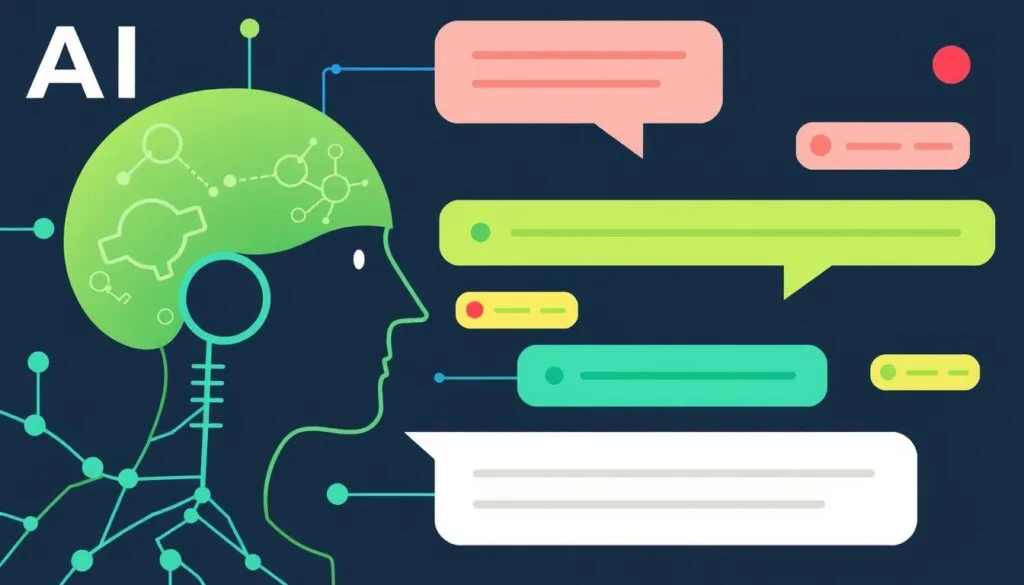
Imagine a digital assistant that never sleeps: it can scan millions of messages and flag who used warm words, who replied quickly, or who dominated a conversation. These tools measure things like reply time, question frequency, and word choice all of which are useful information for researchers studying how people communicate online.
Small signals yes, even your “haha” count can be meaningful. Some studies suggest people who use more laughter in text tend to report being more open and less anxious in social settings. But that’s a general trend, not a personality test you can trust alone.
Important caveat: these models can reflect the researchers’ blind spots. If a tool is trained mainly on one region’s English or one cultural style, it may misread accents, slang, or local conversation norms. In short, bias can creep in unless scientists deliberately train and test across diverse datasets.
“AI helps us see patterns at scale, but it’s only as fair as the data we feed it,” says a conversation analysis researcher a reminder that technology and ethics must travel together.
Finally, ethical rules matter: most research teams follow review processes and require consent before collecting conversations. So while AI speeds up the science, the same concerns about privacy, fairness, and respectful use still guide how these tools get applied.
Share this quiz with a chatty friend it’s a fun way to spot small habits that shape how people see you.
How Scientists Read Your LOLs
When researchers study conversations, they don’t just scan words they also look at the tiny emotional flourishes that pepper our chats. If you’ve ever typed “haha” several times to soften a sentence, congratulations: you’re contributing to useful data about how people behave online.
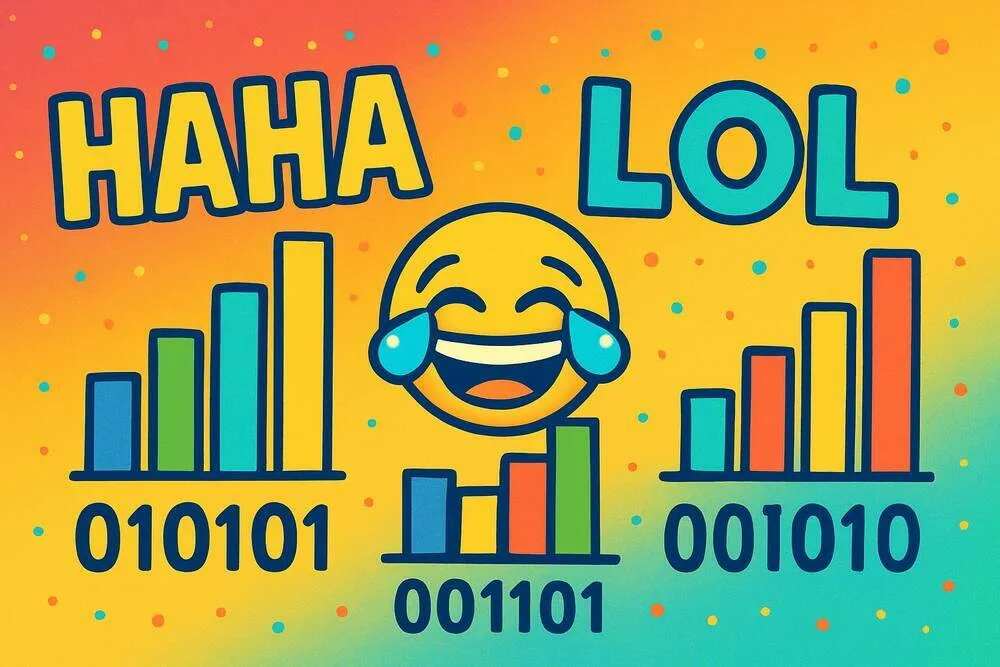
Those little bits [laughter], [pause], [sigh], repeated “haha,” or a string of emojis are called paralinguistic features. That’s a fancy term meaning “extra details around the words” that show emotion or tone. In many studies, these features tell researchers more about someone’s mood or style than the literal words do.
Example: a short chat might be coded like this for analysis:
A: Ugh, long day. [sigh] B: Oh no — want to talk? (reply: 20s) A: Haha, maybe later. 😅 [laughter]
Researchers note the sigh (possible fatigue), the 20-second reply (reply time), and the choice of “haha” plus an emoji (a lighter tone). When you collect these details across thousands of interactions, patterns emerge about people’s emotional life and communication habits.
Some clinical and behavioural studies have linked frequent sighing to fatigue or low mood, and other research suggests different kinds of digital laughter (like “haha” vs. “LOL” vs. 😂) can correlate with personality traits or relationship styles. Language here is messy, so it’s safer to say “some studies suggest” rather than claim anything universal.
So yes your “haha” might end up in a spreadsheet. If you like tiny experiments, try a quick self-test: track your own “haha” count for a day and notice how it matches your mood. It’s a fun way to see how small details map to everyday life.
Why This Matters for Chatrooms
Understanding the science of online conversations has real consequences for how we design and use social spaces on the web. For everyday users, that can mean friendlier rooms, smarter matching, and fewer pointless arguments.
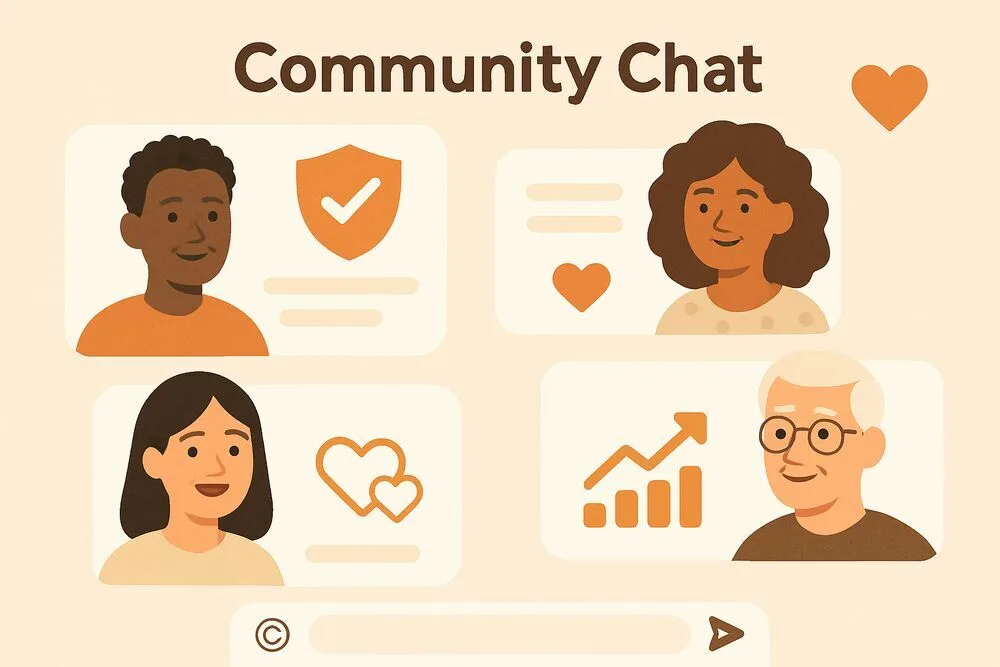
Safety
Pattern detection can help spot risky interactions early for example, algorithms might flag rapid escalation in language or repeated hostile posts so moderators can step in. That doesn’t replace humans, but it gives moderators useful signals to protect members.
Connection
Small design tweaks inspired by research can boost real connections. A “follow-up question” prompt, or reaction buttons that encourage thoughtful replies (not just a quick like), nudges people toward deeper conversation.
Engagement
For social media and other platforms, these insights reveal what keeps people coming back. Encouraging curiosity and clearer turns in conversation helps build communities where people actually stick around and contribute.
Companies and researchers are already testing tools that suggest calming language during rising tensions or offer icebreaker prompts when a thread stalls. If done carefully with attention to privacy and user consent this research could help build kinder, more human-feeling media platforms where meaningful discussions and connections flourish.
The Future of Conversation Science
As our digital lives take up more of our time, the science of online conversations keeps growing in importance. Researchers are exploring new frontiers: how virtual reality shifts the feel of a chat, how different cultures express themselves on social media platforms, and how we might build AI companions that genuinely understand human communication. These are active areas of study rather than finished products, but the direction is clear: conversation research will shape how we connect online.
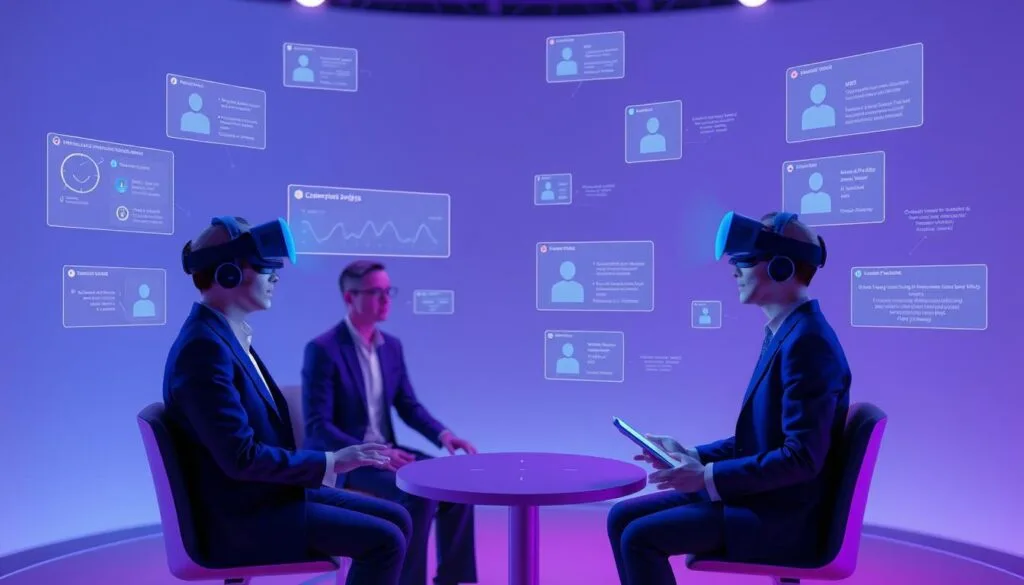
Every chat is a tiny piece of social science. Technology now helps us understand connection, empathy, and misunderstanding better than ever. So next time you hit send, remember you’re not just talking. You’re taking part in a huge, ongoing experiment in how people discuss, disagree, and get along online. Small changes matter: try asking one extra follow-up question this week and notice what happens to the conversation.
💬 Want to explore more?
Dive into other chatrooms — meet new people, try new topics, and see how your conversation style fits in.
Explore All Chats
